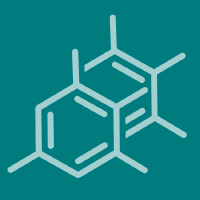Topic Menu
► Topic MenuTopic Editors

Carbon Capture Science & Technology (CCST)
Topic Information
Dear Colleagues,
As CO2 is a major greenhouse gas, the increase in its emissions has led to global climate change and environmental pollution. To realize the green, low-carbon and sustainable development of economy, carbon capture science and technology (CCST) is a vital and potentially effective route to substantially decrease CO2 emissions. Since the majority of CO2 is produced by the combustion of fossil fuels, the most direct way is to capture and purify CO2 from emission sources (power plants, steel plants, etc.). In addition, the removal or separation of CO2 is also urgently important in chemical processes or specific occasions (fermentation plants, natural gas purification, biogas purification and sterile wards, etc.). Meanwhile, CO2 has huge applications in food processing, the electronic industry, enhanced oil recovery (EOR), enhanced coal bed methane (ECBM), and other fields. Therefore, CCST has great scientific significance and engineering application value for environmental protection, energy development, and industrial production.
This topic is oriented toward experimental research and theoretical analysis of phenomena related to pre-combustion and post-combustion carbon capture, materials- and chemistry-related carbon capture science, environmental, social, and political analysis of carbon capture technologies, as well as other research related to carbon emission reduction. Of particular interest are articles addressing issues encountered in developments in CO2 capture and storage technologies, the effective and economical use of CO2, lifecycle assessments, and technoeconomic analyses to evaluate the various CCST processes. Please feel free to contact the editors if you have questions or wish to discuss an idea.
Dr. Zilong Liu
Dr. Meixia Shan
Dr. Yakang Jin
Topic Editors
Keywords
- CO2
- carbon capture, utilization, and conversion
- transportation and storage
- absorption and adsorption
- separation and purification
- social and economic analysis
- management and policy
Participating Journals
| Journal Name | Impact Factor | CiteScore | Launched Year | First Decision (median) | APC | |
|---|---|---|---|---|---|---|

Energies
|
3.2 | 5.5 | 2008 | 16.1 Days | CHF 2600 | Submit |

Molecules
|
4.6 | 6.7 | 1996 | 14.6 Days | CHF 2700 | Submit |

Nanomaterials
|
5.3 | 7.4 | 2010 | 13.6 Days | CHF 2900 | Submit |

Separations
|
2.6 | 2.5 | 2014 | 13.6 Days | CHF 2600 | Submit |

Sustainability
|
3.9 | 5.8 | 2009 | 18.8 Days | CHF 2400 | Submit |

MDPI Topics is cooperating with Preprints.org and has built a direct connection between MDPI journals and Preprints.org. Authors are encouraged to enjoy the benefits by posting a preprint at Preprints.org prior to publication:
- Immediately share your ideas ahead of publication and establish your research priority;
- Protect your idea from being stolen with this time-stamped preprint article;
- Enhance the exposure and impact of your research;
- Receive feedback from your peers in advance;
- Have it indexed in Web of Science (Preprint Citation Index), Google Scholar, Crossref, SHARE, PrePubMed, Scilit and Europe PMC.



